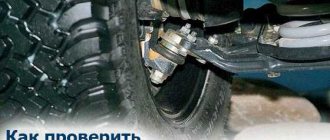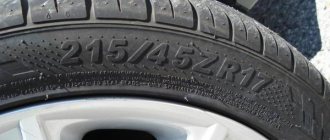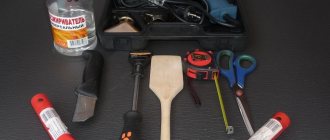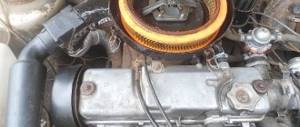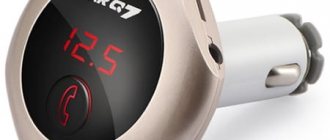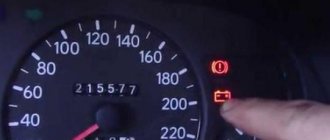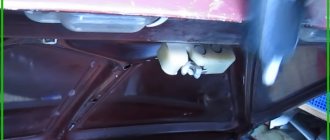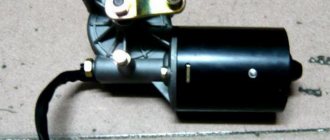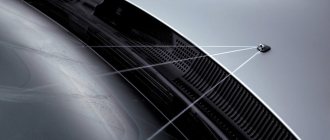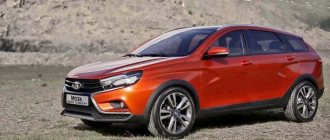Dimensions
The concept of dimensions usually refers to the height, length and width of the car. But the machine is not only in a static position; it also has dynamic dimensions. Those who have carefully studied in a driving school know that there are six main indicators:
- A straight line that continues the wheels – left and right.
- Continuation line of the front bumper.
- Rear bumper.
- Front axle.
- Rear axle.
These parameters are completely different for different brands and not only beginners, but also quite experienced drivers need to get used to them. You can feel them well only after some time has passed - this is the experience of traveling in this particular car. Only after feeling his car, the driver can easily fit into a dense traffic flow or park in a very small and inconvenient space. The same feeling allows you to avoid bumps on the road or move on rough terrain. It’s quite easy to spot a novice driving; many of them try to crane their necks during the trip and try to look at the road in front of the bumper. Such drivers can often see various minor damage to the bumper, front and rear, or headlights. All this is most often the result of unsuccessful parking. You can try to avoid this, because even minor repairs often cost a very tidy sum.
Why do you need to feel the dimensions of a car?
A driver who does not feel the dimensions of his car will inevitably hit the curbs and risk getting into an accident the first time he enters a road with heavy traffic. There are few practical lessons completed during training at a driving school, so it is advisable to do some additional training immediately after receiving your license. The dimensions of the machine are divided into 2 types:
- static - basic parameters of the car (length, width and height);
- dynamic - the distance from the edge of the hood and trunk to the obstacle.
While static values are always constant, dynamic values are not. The driver determines them approximately, so it is very important to learn how to do this accurately. As a result, parking, overtaking, changing lanes or driving around will not cause any problems. You can feel the size of a car only by practicing regularly. Moreover, when driving in reverse, it is more difficult to do this than when driving forward.
Developing a sense of size
For a good driver, the feeling of the car occurs automatically, as if subconsciously, and the goal of any beginner is to achieve exactly this level. To the question of how a beginner can get used to the size, the answer is clear - you need to not be lazy and do some self-preparation. Experienced motorists and driving instructors talk about several groups of possible complexes:
- Completing a complex of individual, or self-guided, training using improvised or stationary means.
- Individual preparatory work on the car.
- Completing training using assistive electronic devices.
Individual car preparation
The adequacy of driving will depend on how comfortable, and most importantly, how correctly the driver sits behind the wheel. Proper seating reduces unnecessary driver movements and speeds up the decision-making process. This is achieved due to the fact that the driver has the correct position of his arms and legs, and in addition, sufficient visibility, without unnecessary bending and peeking. To achieve the optimal fit, the driver needs to make a special adjustment. Adjusting the driver's seat and steering wheel
- Sit in the driver's seat and adjust it just for you. Ideally, you need to fully depress the clutch and move the seat forward or backward so that it is comfortable and there is no desire to stretch. The backrest is adjustable so that when using your legs you do not have to move your entire body.
- Do the same with the steering wheel - your palm should fit between the rim of the steering wheel and your knees, and at the same time the second hand should be extended above the steering wheel and touch its top point with your wrist.
This will allow you to feel as comfortable as possible while riding and not be distracted by numb arms, legs or back. If you feel discomfort after a short trip, try making the changes again.
Adjusting rear view mirrors
Beginners quite often underestimate the importance of mirrors and try to make parking or other maneuvers almost at random. By doing this, they risk damaging their or someone else's car. Adjusting mirrors to suit yourself is not at all difficult.
- In the rearview mirror, the driver should see the entire rear window.
- During the trip, the rear wings at the level of the door handle and the road should be visible in the rear-view mirrors. If parking causes problems, you can change the position of the side mirrors just before parking or install overlays on the blind spots.
How to understand the dimensions of a car for a beginner
For every newbie on the road, entering a narrow area or driving around an obstacle in a small area is a whole quest. In cars where the steering wheel is mounted on the left, it is important to understand that the distance to the right wheel is greater than to the left. Driving school students often focus on the false feeling that they are sitting in the center of the car.
The second, no less common mistake is trying to see the road behind the bumper. To do this, drivers move the seat close to the steering wheel and often raise themselves. You can temporarily solve the problem by installing an antenna on the edge of the car hood. But an experienced driver should not look under the wheels at all, but only at the road directly in front of him.
Another important detail is the mirrors. They may make it appear that other cars are traveling much further than they actually are. In addition, there are blind spots in the side and rear view mirrors, where nearby moving traffic is not visible. Only practice and experience will help you feel the dimensions and become a confident driver.
Exercises to bring the feeling of a car to automaticity
There is a fairly wide variety of training options for inexperienced drivers, which allow you to quickly feel the dimensions of the car. We want to introduce you to the most effective ones.
Beacons
This is the simplest, but no less useful way to feel the dimensions. For this method we will need the following items that are absolutely safe for the car:
- Cones of any bright color.
- Plastic bottles filled with sand. For better visibility, you can stick bright flags into the bottles.
- Sacks or cardboard boxes filled with something very soft.
- Old tires.
The next step will be to install these beacons. Now you can start working directly.
- The driver must stop his car so that his front bumper, first the central part, and then the sides, touches the installed beacon. It’s important to touch, and not knock over or miss – this happens about the tenth or fifteenth time.
- Then you need to practice the same exercise with the rear bumper. These exercises should be brought to automaticity.
- After completing the first two stages, you need to move on. We mark with beacons the contours of two cars with a distance of 9 - 10 meters. Next, we begin to practice the parallel parking method, which is considered quite difficult.
- We put tall sticks in bottles with sand that will imitate gates and begin to work out the passage. First, the distance between the bottles should be approximately equal to the width of your car + 1 meter. Then we gradually narrow the distance, reducing it by 10 cm each time. The exercise will be considered completed if you can drive the car into a gap that exceeds the dimensions of the vehicle by only 10 cm.
Hitting
To complete this exercise we will need several empty plastic bottles. They are very susceptible to deformation and at the same time emit a very loud sound, which is almost impossible not to hear. We place the bottle on the road and try to run over it first with one wheel, and after achieving stable success - with the other. The exercise only seems simple, but without a good sense of the dimensions of the car it is almost impossible to do it. Gradually this task can be made more difficult. First we try to do the same thing, but at a higher speed. It is important here not to exceed 60 km/h, as you may end up in an emergency. The most difficult option for such training would be to run the tire into an object while simultaneously performing a turning maneuver. Not all drivers with extensive experience cope with this task on the first try.
Tags
A fairly common way to learn to feel the dimensions of a vehicle is the method of setting marks. Most often it is used by women. This can be done in several ways, but the simplest, in our opinion, is the following option. We will need a large ruler. We apply it to the hood at the level of the center of the front wheel. The second end should rest against the windshield, and a mark should be placed at the intersection. This can be done with a marker, a small colored sticker or adhesive tape. Then you need to do the same action with the second front wheel. These marks will help you drive the car for the first time and perform better in other training sessions.
Parts of the car can also become reference points for the driver; for example, many novice drivers can see deflectors on the hood; they very well indicate the leading edge of the hood. Manufacturer-installed bumps above the headlights can be a big help. Things are somewhat more complicated with installing tags at the rear of the car. Drivers of crossovers or hatchbacks quite often focus on the rear windshield wiper. Drivers of sedans can try installing an antenna on the very edge, which, however, is not always convenient.
Electronic equipment
Today, many vehicles are equipped, even in the basic version, with various systems aimed at helping the driver, but they also need to get used to. Such systems can be installed independently. The simplest option includes sensors that warn of approaching obstacles with sound or color indication. In expensive versions, you can find rear view cameras with a grid to determine the distance to an obstacle. The presence of all such devices does not mean that you do not need to learn to feel the dimensions of a car. This feeling gives you a feeling of confidence and pleasure from the trip. Take the time to do the exercises using all your electronics.
If you just got your license or bought a new car, don't neglect additional training and wait for the first incident. Pay as much attention as possible to your classes and soon you and your car will become one.
